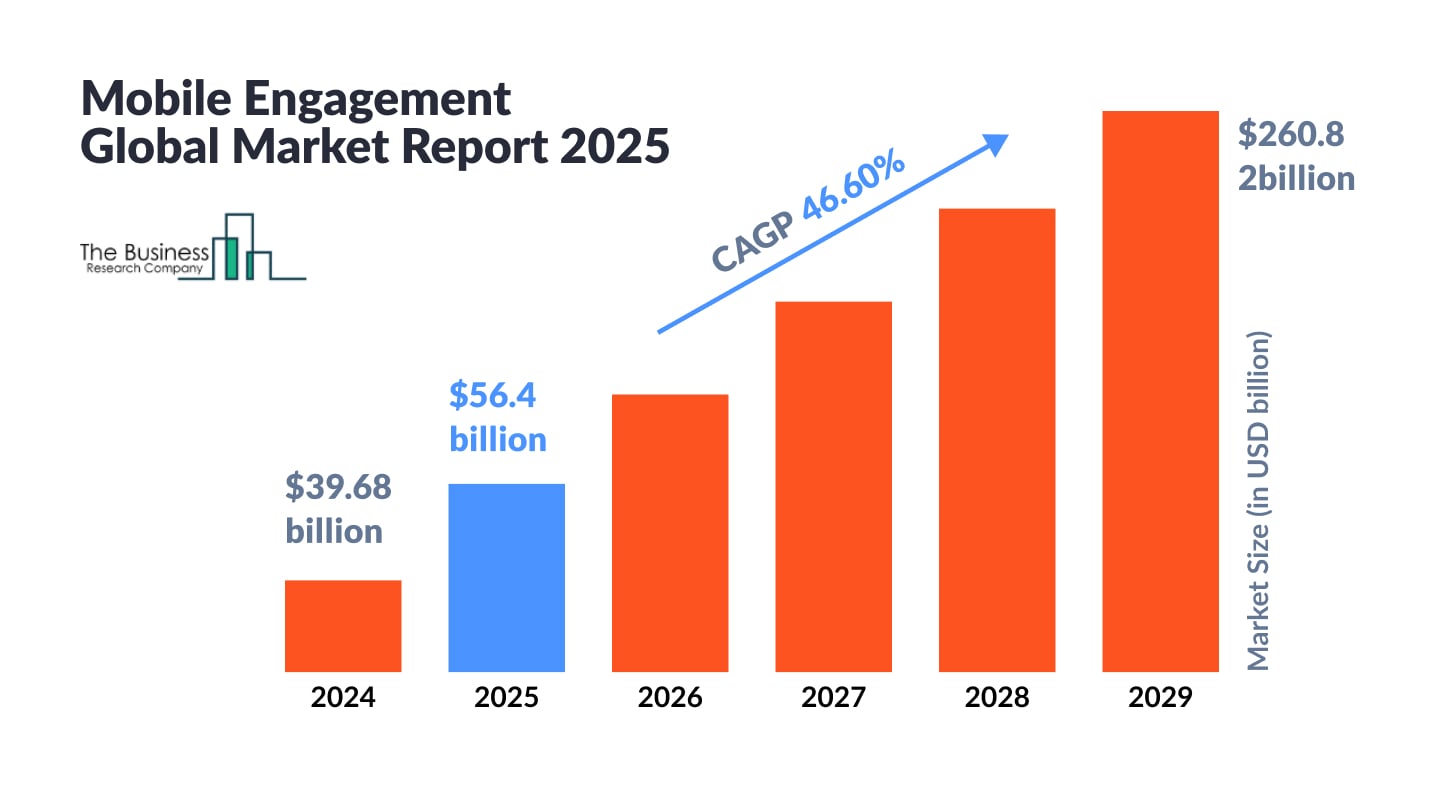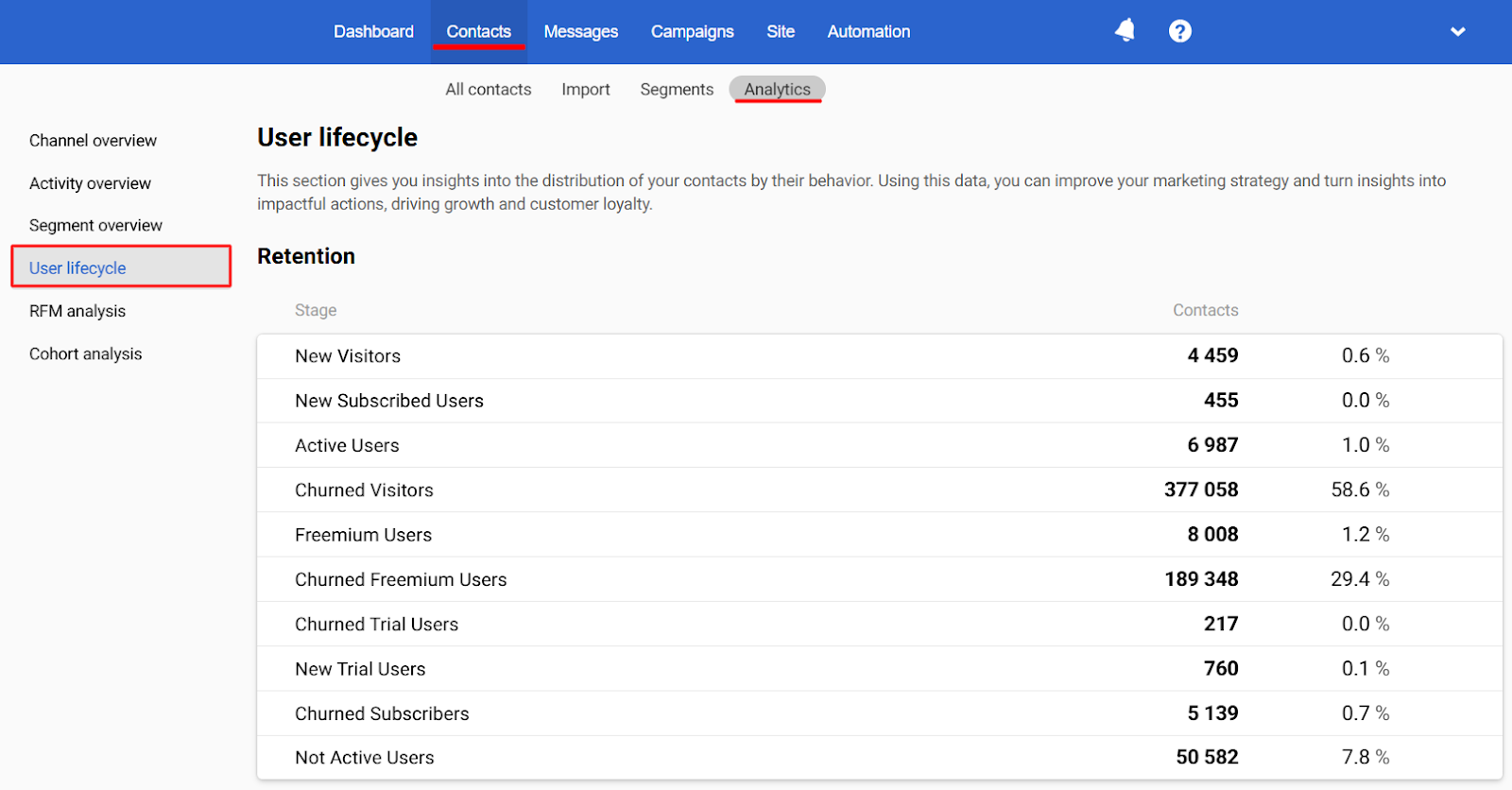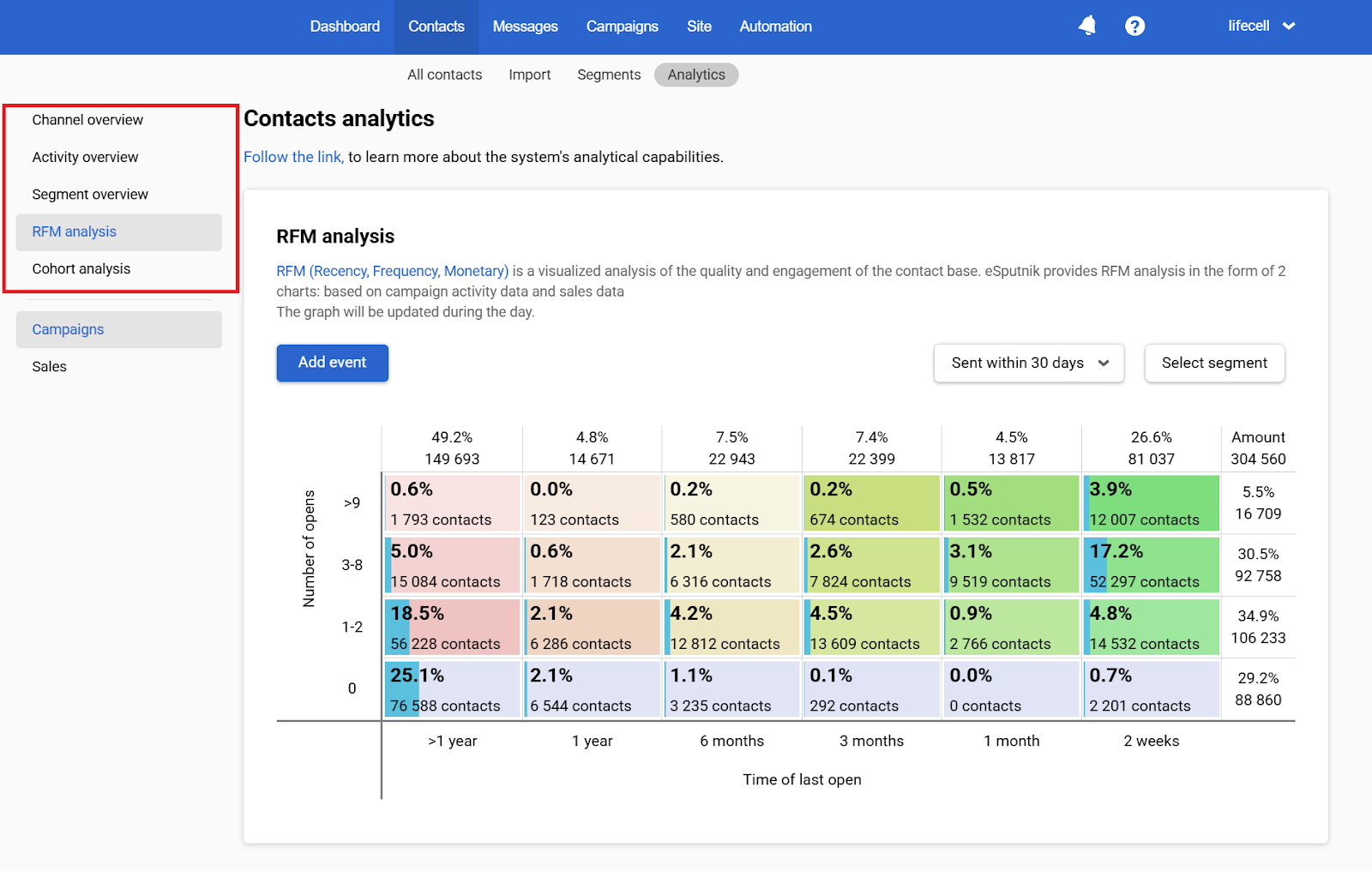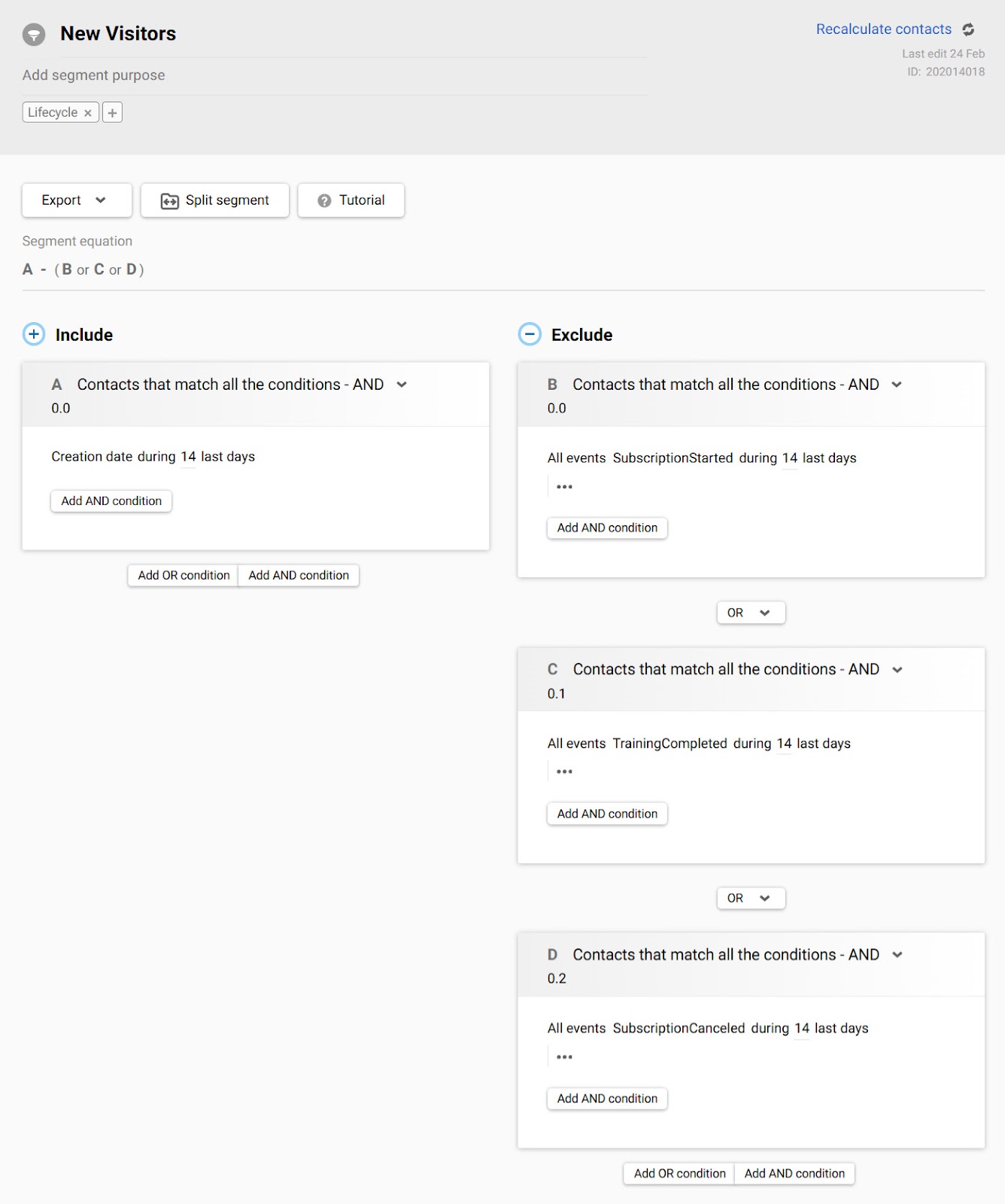
Myroslav Protsan
SEO Specialist, Reteno
July 18, 2025

Myroslav Protsan
SEO Specialist, Reteno
July 18, 2025

Today is a mobile-driven era, with the number of mobile devices exceeding the planet's population more than twofold, reaching a staggering 18.22 billion. People use these devices to work, study, travel, shop, and entertain themselves. Given the ubiquity of smartphones, tablets, smartwatches, and other gadgets, ignoring mobile as a marketing channel spells inevitable failure for businesses aiming for lasting success.
This article explores the core of mobile engagement, explaining its importance, listing the touchpoints through which it is performed, recommending mobile engagement strategies and performance metrics to measure their effectiveness, and highlighting specialized solutions that help enterprises increase the engagement and retention of their users.
According to a survey conducted in late 2024, the average American now spends 5 hours and 16 minutes on their phone, which marks a 14% increase over the previous year. Astute entrepreneurs do not want to waste a single second of this precious time, so they use it to interact with potential and existing consumers of their products or services.
At its core, mobile engagement boils down to creating meaningful user experiences (UX) with a high degree of personalization by reaching out to consumers via their mobile devices. By capturing people’s attention and sparking interest in contacting and purchasing from an organization, companies support their business goals, enhance brand experiences, and foster lasting relationships with their clientele.
As mobile device penetration surges, so does the mobile engagement market. Currently valued at over $56 billion, it is projected to surpass $260 billion within four years, displaying a phenomenal CAGR of 42.1%.

Several factors make mobile app engagement a mission-critical component of an organization's customer-facing routine.
Mobile push notifications, instant alerts, SMS, and in-app messaging instruments keep customers updated on new releases, promotions, order statuses, and more, allowing people to stay informed in real-time.
By maintaining a consistent presence through messages, reward programs, and timely support, organizations build enduring bonds with their audience. Over time, such companies become go-to partners that people turn to on various occasions and recommend to family and friends.
This stronger loyalty translates into higher retention. When executed skillfully, a mobile engagement strategy prevents churn and strengthens retention marketing. It encourages audiences to remain loyal to the brand indefinitely and boosts their customer lifetime value (CLV).
Easy access to a wide range of products, seamless user journeys, and streamlined checkout procedures provided by mobile engagement channels drive conversion rates, facilitating people’s movement down the conversion funnel. Moreover, they stimulate impulsive purchases, directly driving revenue.
Knowing where customers are located enables organizations to personalize their recommendations and offers, informing users about a sale in the nearby outlet or targeted discounts at their shopping area.
To create an effective mobile engagement strategy, organizations should aim for cross-channel and omnichannel engagement, which includes the following touchpoints:
These serve as primary time-sensitive engagement tools since they are delivered as on-screen banner alerts or to the device’s lock screen. You can make them more impactful by enriching them with media (photos or videos) and user segmentation (for instance, message preferences, in-app behavior, location, etc.).
Unlike push notifications that users can block, these mobile app engagement tools are embedded within the app experience and cannot be blocked, so the audience will receive them regardless. They complement push notifications and deliver additional or exclusive information.
You can send messages to people’s mailboxes to make sure customers who miss or ignore other channels receive important information or updates. Email allows for more detailed content and precise user segmentation as part of a comprehensive mobile engagement strategy.
By leveraging GPS, Wi-Fi, IP addresses, and other location markers, local businesses can promote their services and drive foot traffic to their physical locations with highly relevant updates and offers. In some cases, marketers complement this with data aggregation from public sources using a web scraper API or similar tools to analyze local trends, monitor competitor offers, or track event-based opportunities. Alongside IP proxy providers, these solutions can help collect accurate, location-specific insights while maintaining compliance with relevant regulations.
You can maximize the benefits of various touchpoints by adhering to the best practices of mobile engagement.
Discovering something new is always challenging. First impressions matter. Therefore, don't make your app's learning curve too steep; otherwise, your audience will abandon it before realizing its full potential. The onboarding process should be simple, fast, and enjoyable. Welcome messages, tutorials, guided tours, tips, and gamification can streamline this experience and make it more appealing. Additionally, instant access to support should be a non-negotiable feature from the very beginning.
To stay ahead of technological advancements and meet the expectations of today’s tech-savvy audiences, incorporating AI-fueled tools is essential. AI supports personalized user experiences, dynamic content adaptation, optimal engagement timing and channel selection, predictive analytics, chatbots and virtual assistant functionality, targeted advertising, and much more.
No engagement mechanism or app feature is carved in stone. You should monitor users' reactions and encourage their feedback through A/B testing, questionnaires, and surveys. By keeping your fingers on customers’ pulse, you will understand their concerns and address issues before users have a chance to churn.
People won't engage with an app much unless they derive some value from the interaction. You should go to great lengths to discover your audience's preferences, interests, needs, and pain points, tailoring your content accordingly. Ideal content is highly personalized, relevant, timely, and interactive.
For ultimate mobile app engagement, a superb user experience is just as crucial as quality content. It is not only about smooth performance, intuitive navigation, broad customization options, and a clean, uncluttered UI design. You should offer users unique capabilities such as enhanced security through biometric authentication, specialized sensors, custom ROM, voice assistants, and gamification. All of this will help your app stand out from the competition.
If you provide engaging and valuable content, users are more likely to send it across their social networks. You should encourage this by making the sharing process seamless and by fostering a sense of community around your brand. This approach will drive organic traffic, boost brand awareness, and help establish your company as an authority in the niche.
Users should be able to enjoy your app even in areas with poor or no internet connectivity. To enable offline functionality, prioritize essential features, implement robust caching mechanisms, optimize data storage and synchronization, and ensure seamless switching between offline and online modes. Keeping offline capabilities up-to-date is key to maintaining a positive user experience.
Some new entrepreneurs assess the success of mobile engagement methods only by tracking purchase frequency dynamics. In reality, however, mobile analytics offers multiple parameters to gauge engagement efficiency.

This metric shows the percentage of people who continue using the app after a certain period (typically a week, a month, or a quarter). To calculate it, divide the number of users at the end of this period by the initial number of users, then multiply the result by 100.
These acronyms stand for Daily Active Users and Monthly Active Users. They reflect how many people use your app on a daily or monthly basis, offering insights into its stickiness and overall popularity.

It measures the time users spend in the app from the moment they open it to the moment they complete the last action (or close the app). A longer session duration often indicates greater user interest and the app’s perceived value.
Session frequency tracks how often users open your app: daily, weekly, or monthly. It's less about how long they stay and more about how frequently they return.
This key metric reflects the percentage of users who completed the desired action, such as purchasing a product, signing up for a newsletter, submitting a request, claiming a discount, or downloading content. To calculate it, divide the number of such actions by the total number of interactions (clicks or visitors) and multiply the result by 100.
This measures both the uninstalls after reinstallation and initial uninstalls over a specific time period (daily, weekly, or monthly). It’s a crucial metric for identifying retention issues.
The parameter displays the average amount of revenue generated per user over a defined time frame. To calculate it, you divide total revenue within a specific time by the number of active users during that period. This metric not only tracks customer engagement but also helps assess the effectiveness of a company’s pricing strategies.
By assigning each app screen a unique identifier, you can track which screens attract the most views and where users spend the most time. Knowing which screens get the greatest number of views and the longest time spent helps app owners understand user behavior, improve navigation, and set development priorities.
A mobile engagement platform is a specialized solution that allows companies to create, manage, and optimize mobile engagement with customers from one place. It serves as a hub that consolidates all mobile marketing channels under one virtual roof and enhances them with advanced analytics to enable entrepreneurs to derive the most value from their mobile engagement initiatives.
The essential features of a mobile engagement platform include:

Even when administered from a unified platform, mobile engagement is a complex task, with many nuances. So how can you handle it effectively?
With mobile devices rapidly becoming indispensable marketing tools, mobile engagement is no longer an optional effort, it is the backbone of effective business-client interaction that should be delegated to vetted professionals in the field. Reteno is your trusted partner for developing and executing a comprehensive mobile engagement strategy.
The numerous projects we have successfully delivered stand as a vivid testament to our top-tier expertise and proven effectiveness. Our platform lets you design and implement a cohesive set of battle-tested measures across multiple touchpoints to boost your audience’s mobile engagement and unlock new revenue streams for your business.
Contact us to elevate your mobile interactions and take your customer engagement to new heights.
The widespread adoption of mobile devices has transformed customer engagement into an essential marketing pillar for enterprises with ambitious goals. Building and maintaining continuous rapport with your audience fosters real-time interactions, strengthens customer loyalty, enhances client retention, boosts conversion rate, and enables precise location-based targeting. To create a truly efficient mobile marketing strategy, you must leverage every available touchpoint, apply mobile engagement best practices, track performance using the right metrics, and collaborate with experienced specialists who can help you design and execute these initiatives successfully.
Alex Danchenko
|
October 13, 2022
Find the best ways to increase user engagement in your mobile app. Practices that really work
George Johnson
|
June 24, 2025
Uncover the power of customer engagement models and get expert tips on using them to build deeper, more meaningful customer connections

